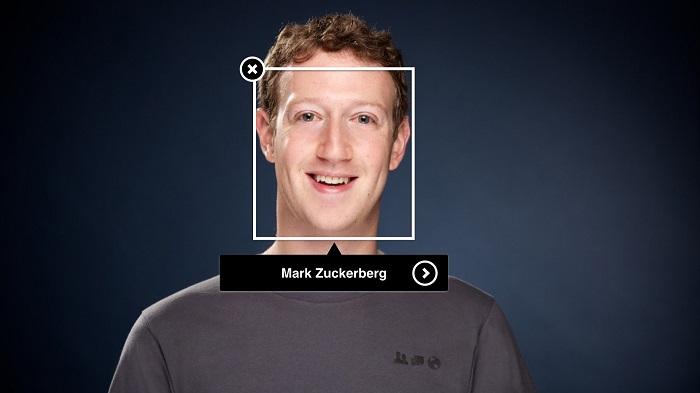Top 6 AI Applications and Trends in Media and Entertainment 2024
Artificial intelligence tends to be associated with sci-fi settings and futuristic technologies, but the reality is that people in the modern world have already been relying on AI for years. Things like smart homes and autonomous vehicles are already well-known examples of that, but did you know that the media and entertainment industry is also highly dependent on AI? In fact, it wouldn’t be too farfetched to say that the industry wouldn’t be nearly as sophisticated as it is today without machine learning.
With that in mind, we decided to take a closer look at some of the best examples of Artificial intelligence in media and entertainment so we can get a better understanding of how this technology is shaping our day-to-day lives. I’m sure you’ll be familiar with at least a couple of the examples listed in this article, however, some of them may end up surprising you. Either way, we think you’re going to find this article very interesting.
Content Personalization
If you’re familiar with platforms like Netflix, Spotify or YouTube - and there’s a good chance you are - you already know about content personalization. Platforms like these use machine learning to track user preferences and recommend content that’s similar to what they’re already used to watching. Of course, the system isn’t always perfect and the AI can sometimes end up recommending content you’re not interested in. But the more you use the platform, the more data the algorithms have to work with, resulting in increasingly more accurate recommendations.

The reason why this is one of the best examples of AI use in media and entertainment is because you can easily test it out for yourself. Simply go to your favorite streaming platform and start consuming content that you wouldn’t normally touch. You’ll notice that the platform will quickly adapt to the behavioral change by personalizing your feed with content that matches your new found taste. Studies have shown that we are a lot more likely to consume content recommended to us than content we specifically look for. So I guess you could say artificial intelligence already decides what we watch and listen to, at least to a certain degree.
Also read: 5 Selective Methods to Animate a Picture 2022.
Automated Subtitles
This is a fascinating example of AI use in media and entertainment because even though it’s been a thing for a while, it’s only now starting to become reliable. Multilingual subtitles have been around for many years and until recently they were made exclusively by humans. As you might image, translating movies or TV shows takes quite a bit of time and effort. Not to mention that you need people who are fluent in multiple languages. This is very limiting for a number of reasons, so why not let artificial intelligence do it for us instead? As it happens, that’s exactly what’s starting to happen right now.

At the moment, YouTube is probably the best example of a well-known streaming platform that uses automated subtitles. The option to display auto-generated captions of the video you’re watching has been available for some time, but the ability to also translate it into a wide variety of languages is a fairly recent development. As with a lot of other things related to artificial intelligence, YouTube’s auto-translate feature is far from perfect but it does work surprisingly well in many instances. And will no doubt keep getting better and better in the near future.
Image Editing Software
Complex image editing has traditionally been fairly painstaking and time-consuming even with mainstream software like Photoshop. This is rapidly changing, however, as these days you can get your hands on AI-powered image editing tools that can do most of the work for you. A prime example of this is VanceAI, a company that offers numerous such tools that can do everything. You can remove background from image, denoise photo, sharpen images, and enlarge image without any loss in quality. To name just a few of their capabilities. My personal favorite use case is to turn black and white gaming wallpapers into colored ones using the AI image colorizer.
The best part about all these tools is that you don’t need to know anything about image editing in order to use them. The process generally involves uploading an image to the website, selecting the desired tool, and letting the artificial intelligence do the rest. In some instances, you have the option of customizing your images in various ways before processing, but it’s all very straightforward and intuitive. The technology is quite new and there aren’t many other companies working on something like this just yet, so I guess you could call VanceAI a pioneer in this field.
Video Games
Video games have seen a meteoric rise over the past couple of decades, thanks in no small part to artificial intelligence. In fact, video games are one of the best examples of AI use in media and entertainment because the two have evolved alongside each other. Video games have helped bring artificial intelligence into mainstream culture and have helped revolutionize the technology in more ways than one. But this is very much a mutually beneficial relationship as video games wouldn’t be nearly as impressive as they are today without AI.

As far as concrete examples are concerned, developers of games like F.E.A.R. or The Last of Us have done an excellent job at using AI to create eerily realistic enemy behaviors, especially during combat. The Last of Us also has the distinction of having one of the most impressive artificial intelligence allies in gaming, in the form of Ellie. Meanwhile, Middle-earth: Shadow of Mordor’s Nemesis system is still being praised to this day for making interactions between players and NPCs more complex than was ever thought possible before.
Automated Journalism
Automated journalism, often referred to as robot journalism, is a relatively new phenomenon that’s only now starting to pick up traction. Essentially, we’re talking about machine learning algorithms that can aggregate data from various news sources and use it to create fresh articles. Well, fresh is perhaps not the best word to use since these algorithms basically rewrite existing articles and aren’t really capable of breaking the news themselves. Then again, a lot of news outlets already do this so the question is, do you want a human to do it or an AI?

The potential implications of automated journalism have raised more than a few concerns. Writing jobs have traditionally been considered safe from being overtaken by AI, but now we’re no longer so sure. Especially since AI has also started to encroach into the field of creative writing as of late. But perhaps the biggest concern has to do with the veracity of articles generated by artificial intelligence. Unless properly calibrated, machine learning algorithms might have a difficult time distinguishing between facts, speculation, and rumors when generating articles. Therefore, they might end up propagating fake news articles, which seem to be more and more prevalent these days.
Facial Recognition
You run into artificial intelligence everywhere you look these days, including social media. Or should we say, especially on social media. Unfortunately, social media is oftentimes given as an example of why basing something primarily around AI isn’t always such a great idea. You can see this a lot with Facebook, in particular, which relies heavily on machine learning to curate user feeds.

If you’re a Facebook user you’ve probably noticed how some types of content, such as pictures of faces, tend to reach a much larger audience than others. This is very much intentional as Facebook is said to collect data from these types of images in order to improve its face recognition software, which is of course based on artificial intelligence. Facebook’s facial recognition technology has become so advanced lately that the company is constantly coming under fire for breaching the boundaries of user privacy. Whether ethical or not, we do have to admit that the AI-based technology used by social media platforms is very impressive.
Final Thoughts
Artificial intelligence truly is everywhere these days and powers many of the technologies we’ve come to take for granted. In this article, we’ve covered some of the best-known examples of AI use in media and entertainment, but we barely scratched the surface here. The impending rise of Deepfake, advanced language processing and better voice-driven AI will likely bring even bigger changes to the media and entertainment industry. We’ll just have to wait and see what the next year will have in store for these emerging technologies, and for artificial intelligence as a whole. Also Read: 7 Best AI in Video Games Review 2022.






